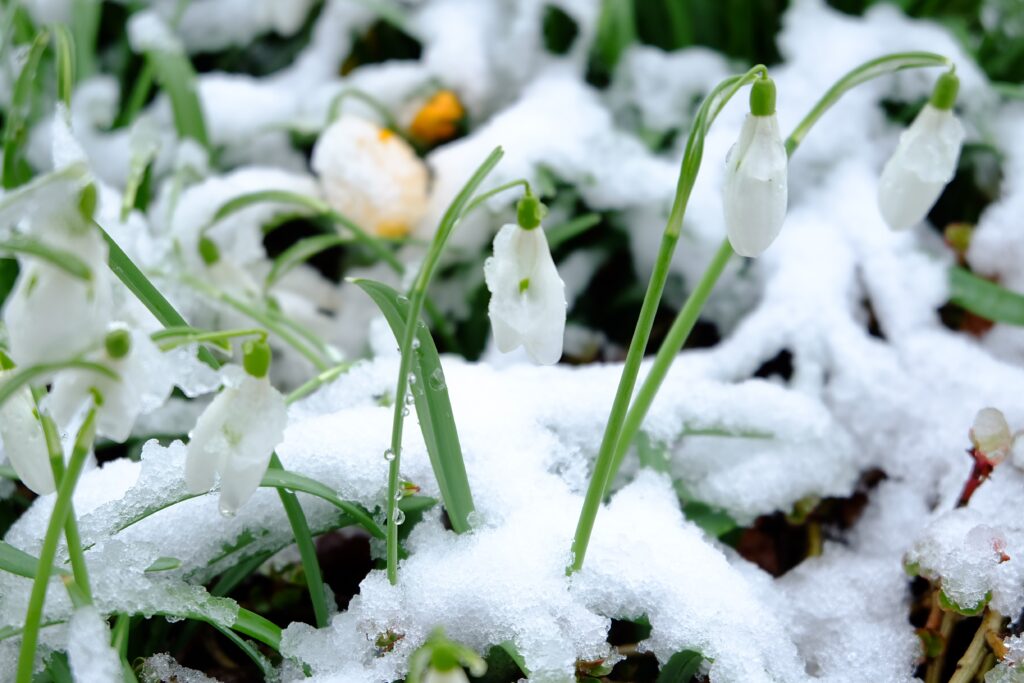Organic Gardening in Cold Climates: Challenges and Solutions
If you love gardening but live in a cold climate, you might feel limited by the short growing season and the chilly temperatures. But don’t worry—winter organic gardening is possible! With the right methods, you can still grow cold weather crops and enjoy fresh vegetables, even when it’s cold outside. Read on to discover practical solutions to the challenges of organic gardening in cold climates.
1. Understanding the Challenges of Gardening in Cold Climates
Gardening in cold climates comes with unique obstacles. Here’s what you need to know:

Short Growing Seasons and Frost Risks
In cold climates, summer can be as short as 3–4 months, which isn’t enough for many plants. Plus, frost can arrive early and stay late, killing plants overnight. It’s important to choose frost-tolerant crops and be ready to protect them when frost threatens.
Soil Quality and Preparation
Cold climate soils are often clay-heavy, which means poor drainage. Additionally, they can be low in nutrients. Adding organic matter like compost can improve soil structure and provide vital nutrients.
Watering and Drainage Issues
Cold soil holds water differently than warm soil. Too much moisture can freeze, damaging roots. It’s crucial to improve drainage to avoid standing water.
2. Choosing the Right Cold Weather Crops
The right plants can make winter organic gardening much easier.
Cold-Hardy Vegetables and Herbs
Some vegetables and herbs thrive in cold weather. Here are a few that grow well in colder temperatures:
- Kale: Extremely frost-tolerant; some varieties grow sweeter after a frost.
- Carrots: With deep roots, carrots survive the cold when mulched well.
- Radishes: Fast-growing and cold-hardy, ideal for short seasons.
Native Plants and Perennials for Cold Climates
Native plants are naturally adapted to local weather. Look for perennials like hardy herbs, wild berries, and edible flowers that can survive winter. Once planted, they often return year after year.
Starting Seeds Indoors
Starting seeds indoors extends your season and helps protect young plants from frost. Use a sunny windowsill or a basic grow light setup. This way, by the time spring arrives, your plants are strong and ready to thrive outdoors.
3. Season-Extension Techniques for Winter Organic Gardening
With the right methods, you can push your growing season longer and start earlier.
Frost Protection
To guard plants from frost, cover them on cold nights. Row covers, cloches, or even an old sheet over sensitive plants can help. Remove covers in the morning to avoid trapping moisture and heat.
Cold Frames and Mini-Greenhouses
A cold frame or mini-greenhouse captures warmth from the sun and keeps plants safe from frost. You can build a simple cold frame using an old window and some wood. Place it over garden beds to keep soil warm and extend the season by several weeks.
Mulching for Soil Insulation
Mulch helps insulate the soil, protecting roots from freezing. Use organic materials like straw, shredded leaves, or wood chips. Apply 2–4 inches of mulch to keep soil temperature stable, helping plants survive winter.
4. Organic Soil Amendments and Fertilization
Nourishing soil is essential, especially in cold climates where nutrients can be limited.
Composting in Cold Climates
Cold weather slows composting, but you can speed it up. Turn your compost often and cover it with a tarp to retain warmth. You can also add fresh kitchen scraps and yard waste to keep it active.
Natural Fertilizers for Cold Soils
Manure, seaweed, and bone meal work well for cold weather gardening. They break down slowly, feeding plants through winter without burning roots. Avoid synthetic fertilizers, as they can shock plants in low temperatures.
Adjusting Soil pH Naturally
Soil pH affects nutrient availability. Cold-climate soils are often acidic, which some plants dislike. Use natural products like lime to raise pH or sulfur to lower it. A soil test can tell you the current pH and guide adjustments.
5. Natural Pest Control and Maintenance
Organic pest control keeps your winter garden healthy and safe.
Eco-Friendly Pest Control
Common pests in cold climates include aphids and slugs. Use diatomaceous earth to deter slugs, and spray aphids with soapy water. Both methods are natural and safe for edible plants.
Winterizing Your Garden
At the end of the season, cover your garden with mulch or a green manure crop to enrich the soil. This prepares your garden for spring and helps prevent erosion over winter.
Planning for Next Year
Keep a gardening journal to note what worked and what didn’t. Record frost dates, pest issues, and plant success. Reviewing this information will help you make better decisions next year.

FAQs About Gardening in Cold Climates
Q1. What vegetables grow best in winter gardening?
Cold-hardy vegetables like kale, carrots, radishes, and some types of cabbage are great for winter gardening. They can handle frost and grow well in short seasons.
Q2. How can I protect my plants from frost?
Use row covers, cloches, or cold frames to protect your plants from frost. These structures hold warmth and keep plants safe from freezing temperatures.
Q3. Can I compost during winter?
Yes! While composting slows down in winter, turning the pile and keeping it covered helps it break down faster. Add new kitchen scraps to keep the compost active.
Conclusion
Gardening in cold climates comes with challenges, but it’s possible to have a thriving winter organic garden. With the right techniques and careful planning, you can extend your growing season, grow cold weather crops, and enjoy fresh vegetables year-round. Embrace the learning curve, and soon you’ll have a garden that thrives even in the cold!
To learn more about organic gardening, keep visiting the top organic gardening blog.
